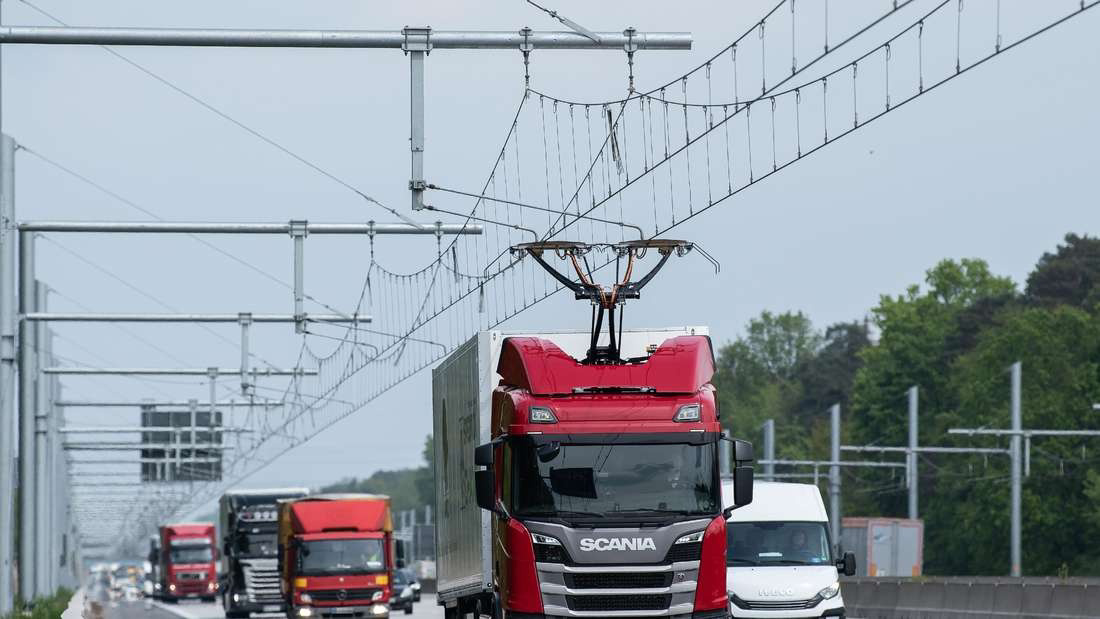What the actual fuck⁈ “Batteries can catch on fire.” Sure, whatever could go wrong with a 1000l tank of FUCKING GASOLINE.
AAAaaaaHHhh I hate people!
Going with the “batteries catch on fire argument” is stupid. “Batteries are heavy and expensive” is probably more compelling. But yeah, wires are better solution for things going in fixed routes.
The ammount of water required to put out a normal car is infinitely less than the amount required to put out a battery fire.
Not to mention the extra weight, nor the retention loss per recharge meaning we need to change batteries every 2-4 years polluting a lot more, we ain’t even talking about the energy loss when doing the conversion to electric and then again to mechanical.
The electric transport is the way to go in the future, but firts it needs to have a solid foundation, and nuclear is the way to go at least in this moment. Otherwise we are only making things worse.
Edit for those wondering about the battery degradation: https://www.geotab.com/blog/ev-battery-health/
we need to change batteries every 2-4 years
Wait, what‽ No. We don’t need to change batteries every 2-4 years. That’s what you do with TV remote controls and temperature sensors, not electric car batteries, LOL!
Electric car batteries are made to last at least 7 years (from a warranty standpoint) but in reality it’s more like 10. Not only that but they’re not single, gigantic objects. They’re made of lots of “cells” so if one of them is going bad you can replace just that one bad cell.
Anecdote: The batteries in my Prius lasted 15 years before I had to replace one of the cells. Then a year later I had to replace another one. A year after that I sold it so I have no idea how the batteries are doing right now but I’m sure another cell would probably need to be replaced by now 19 years in service).
I’d also like to point out that the latest electric car batteries are vastly superior to the ones in my Prius.
Yeah, what I’ve heard is that water cooling the batteries (like almost every EV does now) massively extends the life. Early Prius batteries had no cooling and the heat degraded them faster. 15 years is a pretty good life still.
On the subject of battery warranty:
The federal government requires manufacturers to offer an eight-year/100,000-mile warranty on all EV batteries. California does one better, mandating a warranty of 10 years or 150,000 miles. Some companies will cover a battery only if it completely stops working, while others will replace the battery if it falls below a certain capacity, usually 70% of the original, while still under warranty.
It’s important to note, a degraded battery, even with 50% of its original capacity is still useful. Someone who doesn’t need the range could drive it, or the battery could be taken apart, and have the cells repurposed or recycled. Lithium and some of the other rare metals used in batteries are quite valuable for recycling, and our abilities to do so are getting better every year.
Honestly, for growing places, or places with bad public transit, diesel busses are the way to go. They are the cheapest and require almost no new infrastructure so it can offset car emissions quicker than the other options. Established bus routes that are popular should be converted to tram lines or BRT.
But cables ugly/s
And the same people who gripe about overhead cables apparently have no trouble staring at a street full of idling, polluting, and noisy cars. It’s really impressive.
This is just a tram without the tracks? Guessing it is just for charging otherwise why not just have a tram which is much safer, more space and can basically drive itself
It has some benefits if they are worth or not I am not so sure.
It’s easier to change the routes, either permanent or temporally. In the case of temporally if it has a second source of power like battery or non electrical engine it can like use a non electrified street if there is some emergency or construction or whatever.
You can change routes for special days easily without junctions or whatever is needed for trams without big issues.
And even if it needs to electrify a new zone it, it probably much faster than the work for adding new rails and junctions.
Exactly, you don’t need to build tram tracks, and you can easily build routes uphill/downhill. I’m no expert on trams but I think it’s pretty complicated to have them go through versatile environments without having to build tunnel systems etc, so building a network that makes even more remote corners of a city accessible is much easier.
trams!!!
This. Trams are so much nicer, carry more people, way less maintenance cost and the tracks look so good if grass grows between it, also I don’t get motion sickness on them. You don’t even need any asphalt for them which is expensive to maintain, looks worse than pretty much anything except maybe a literal pile of garbage and heats up the surrounding area.
Buses are lame. They combine the cons of public transit with the cons of driving a car in a city. I believe in tram surpremacy.
The tram supremacy doesn’t lie in the inherent nature of the technology but in the way we treat it! Trams get:
- their own lane
- dedicated signals at intersections (often even priority)
- infrastructure money and thus planning effort
In short, they are (usually) treated like public transport. Busses on the other hand are too often treated like just another car that’s thrown in with the rest but also has the obligations of public transport. If you treated trams like that (sharing the road, waiting behind cars) they would be even worse than busses.
I love trams, light rail, and subway systems. I’ve had to think long and hard about why. Busses have notable advantages for flexibility and redundancy in the system, so why do I prefer to use a railed transit solution?
For light rail, grade separated trams, and subways it’s easy: they’re faster in the city. Like… WAY faster. They don’t fight traffic so I wait a few minutes (at most) in any city with real transit solutions, ride for a short bit, hop off, and I’m there. Not having to deal with my car is freedom.
So… trams… why trams over busses?
First of all they’re bigger. There’s more elbow room and it’s easier to get on and off. It’s easier for a group of people (see: me and the kids) to all climb on and make room. The doors are larger and it’s easier to use multiple doors to load a large group so the people getting on and off a tram can go much faster. There is less shuffling along trying to wedge yourselves into the tram like you’re forced to do on a bus.
Second, they’re predictable and have a visible route. When I’m walking around, I can tell where the tram will be because I can follow the rails. I don’t have to guess what the route will be or where I should go to meet it. Yes, busses have signs every so often, but it’s not nearly the same as seeing the rails and knowing I’m on the route. This is especially true if they do move the bus route (which is what everyone who advocates for busses says is a good thing), and I don’t know it. The bus is just gone.
Thirdly, the tram drives in a predictable path. I can be near it and know where it’s going to go. In fact, whole big crowds of people do it all the time in plazas in Europe. You can walk near the rails and know that you’re still safe. Check out the plaza in front of the main train station in Amsterdam. They chose to run the trams right through it, but not allow busses since they weren’t safe and predictable enough.
Fourth, they’re quiet. Trolley Busses get this too, but trams have had it a long time. They can co-exist with a people-oriented space without being too disruptive. When you sit in a cafe talking with your friends and the tram goes by it’s no big deal. When a diesel bus goes by it’s incredibly noisy.
Lastly, they’re a community commitment. When a city installs a tram, the whole city knows that the route it travels will be supported for a long time. If you choose to live near a stop, you’ll have transit. If you’re choosing to start a business, you’ll want to be close to the tram line so customers can easily get there. The same isn’t nearly as true for a bus line. I haven’t really pinned down why yet, but there’s a very different feel to rolling along on a tram while looking at businesses to visit, and rolling along on a bus. You just don’t have the same kind of connection to the street around you on a bus that you do on a tram.
You. You get it.
Meanwhile on the Autobahn:

“Electric buses aren’t safe because the batteries can catch on fire”
London here running hybrids for over half a decade with no issue.
Because diesel catching on fire is totally unheard of.
Because diesel catching on fire is totally unheard of.
On it’s own? Pretty much unheard of. Usually is a leak and something else set it on fire.
Batteries on the other hand plenty of cases where the battery itself was the starting point. Is usually cause by a bad design or external factors? Yes, not saying otherwise.
And tbh Diesel is the worse example you could put as requires either high pressure or a continuous exposure to a flame as you could throw a lit match on it and it wouldn’t set it on fire. Petrol/Gasoline on the other hand…
Both cases are “external factors causing a fire”
Imagine your car catching fire while you are pumping fuel…
I don’t have to imagine, I saw it with my own eyes. Although it was a bike. Some random spark somewhere ignited the fumes, scary shit.
The best thing trolleybuses have going for them is their relatively low dependence on rare earth elements in production in contrast with BEV buses with their large batteries. Trolleybuses environmental toll is way smaller and it makes producers and operators way less dependent on third world countries devastating the environment with slave labor.
There’s also the centralization advantage and long lifespan. Centralized power generation is nearly always most efficient, and EV batteries degrade relatively quickly, while there are real life examples of 30 year old trolleybuses still operating fine.
Those 30 year old trolleybuses die when power dies, but even semi modern ones (aka 15-10 year olds) can still have diesel backup. New ones always have battery backup.
That’s true but still those batteries are significantly smaller than those of BEV buses - usually trolleybuses with batteries have 5-15km of range compared to 200-350 km of equivalent BEV buses which also means that the trolleybuses are significantly lighter than BEV buses, which helps with efficiency of electricity utilisation. Another efficiency factor is that not having to charge and deplete a huge battery will save quite significant ammnount of power that is lost as heat during battery operation.
batteries are significantly smaller than those of BEV buses
And that is an advantage. Lower cost and lower weight.
No argument here. We need more trolleybuses.
Battery fires are also less common than gasoline fires. But batteries are expensive, so overhead lines are still a good idea





